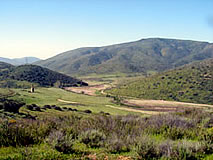The NCCP program was transformative in San Diego, creating a reserve system in the southern half of the county that never otherwise would have come into existence. EHL played a major role in an advisory committee that built enough consensus to enact the program.

The crown jewel of the 172,000-acre system is the Rancho Jamul Ecological Reserve-San Diego National Wildlife Refuge complex, whose establishment directly resulted from the NCCP effort. Assembly continues, with the Endangered Habitats Conservancy focusing on threatened wildlife corridors.
The northern portion of the county is more of a mixed picture, as the County is still processing its habitat plan in that area, and of the northern cities, only Carlsbad has an adopted NCCP. While early tradeoffs in Carlsbad were painful, we have persevered in ensuring that enough critical lands were protected in the rest of this “core area” for the California gnatcatcher. Over the years, EHL has monitored every single subdivision in San Diego County – numbering in the hundreds – for habitat plan consistency, and commented as necessary.
EHL’s other main project, the San Diego County General Plan Update, is pending adoption. EHL played a central role in an advisory group that established “smart growth” planning principles that guided map-making. While the end result will not achieve all our goals, it is nevertheless likely to significant advance saving what is left of the “backcountry.” However, ongoing threats, like leapfrog development proposals on the 22,000-acre Rancho Guejito remain.
EHL played a leading role in crafting the 2004 TransNet sales tax extension, which included over $800 million dollars as habitat mitigation. This has already funded many important land acquisitions.


